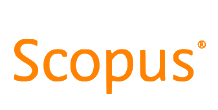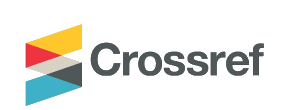Ensuring health graduates' employability in a changing world: Developing interprofessional practice capabilities using a framework to inform curricula
DOI:
https://doi.org/10.21153/jtlge2014vol5no1art566Keywords:
curriculum framework, interprofessional, graduate capabilities, constructive, alignmentAbstract
Curtin University introduced an interprofessional first year curriculum in the Faculty of Health Sciences in 2011. This curriculum, now delivered to over 3,300 first year health science students annually, consists of five common compulsory units, eight optional units (specific to several courses) and one discipline specific unit for each course. Significantly, the learning outcomes are informed by an Interprofessional Capability Framework (Brewer & Jones, 2013). This paper reports on a study which aimed to analyse the use of the capability framework in supporting the development of the desired interprofessional capabilities.
This qualitative study was based on data from student reflective journals in one of the large common units. The sample consisted of 105 of the 411 students enrolled in one of the common units (response rate 25.6 percent) in the second major teaching period (semester two) in 2011. The data was analysed via NVivo8© to provide a holistic view of the content of the reflections as they related to the Interprofessional Capability Framework. The results indicate that the use of the Interprofessional Capability Framework in structuring the learning outcomes has influenced student learning. This is evidenced by the correlation between the themes which emerged during the coding of the data and the Interprofessional Capability Framework. For example, ‘Client-centred’ was the most frequently coded theme, followed by Collaboration, Team Function, and Quality Care, all of which are reflected in the Framework. The major finding of the study is that the framework did have an impact in guiding the development of the foundational interprofessional unit; the learning outcomes included key elements of the framework, the learning experiences were designed to meet these outcomes, and the assessment utilising a reflective journal was designed to measure the development of novice interprofessional capabilities.
Metrics
References
Arndt, J., King, S., Suter, E., Mazonde, J., Taylor, E. & Arthur, N. (2009). Socialization in Health Education: Encouraging an integrated interprofessional socialization process. Journal of Allied Health, 38, 18–23.
Bainbridge, L., Nasmith, L., Orchard, C. A. & Wood, V. (2010). Competencies for interprofessional collaboration. Journal of Physical Therapy Education, 24(1), 6–11.
Bainbridge, L. & Wood, V. I. (2013). The power of prepositions: A taxonomy for interprofessional education. Journal of Interprofessional Care, 27(2), 131–136.
Barr, H. (1998). Competent to collaborate: Towards a competency-based model for interprofessional education. Journal of Interprofessional Care, 12(2), 181–187.
Barr, H. (2002). Interprofessional education today, yesterday and tomorrow. Commissioned by the Learning and Teaching Support Network of the Health Sciences and Practice from the UK Centre for the Advancement of Interprofessional Education. London: CAIPE.
Barr, H. (2012). Toward a theoretical framework for interprofessional education. Journal of Interprofessional Care, 27(1), 4–9.
Barr, H., Koppel, K., Reeves, S., Hammick, M. & Freeth, D. (2005). Effective interprofessional education: Argument, assumption and evidence. Oxford: Blackwood.
Barrett, J., Curran, V., Glynn, L. & Godwin, M. (2007). CHSRF Synthesis: Interprofessional collaboration and quality primary health care. C. H. S. R. Foundation (Ed.) Retrieved from http://www.cfhi-fcass.ca/Migrated/PDF/SynthesisReport_E_rev4_FINAL.pdf
Barrie, S. (2012). A research-based approach to generic graduate attributes policy. Higher Education Research & Development, 31(1), 79–92.
Barrie, S., Hughes, C. & Smith, C. (2009). The National Graduate Attributes Project: Integration and assessment of graduate attributes in curriculum. Sydney: Australian Learning and Teaching Council.
Bathgate, K. & Harris, C. (2012). The impact of eLearning tools on the interprofessional learning experience in a first year foundations health unit. In A. Herrington, J. Schrape & K. Singh (Eds.), Engaging students with learning technologies (pp. 209–222). Perth, Australia: Curtin University.
Bazeley, P. (2007). Qualitative data analysis with NVivo qualitative project book. Thousand Oaks, California: Sage.
Boyd, E. M. & Fales, A. W. (1983). Reflective learning: Key to learning from experience. Journal of Humanistic Psychology, 23(2), 99–117.
Brewer, M. (2011). Curtin University's Faculty of Health Sciences Interprofessional Capability Framework. Perth: Curtin University. Retrieved from http://healthsciences.curtin.edu.au/faculty/ipe_publications.cfm
Brewer, M. & Jones, S. (2013). An interprofessional practice capability framework focusing on safe, high quality client-centred health service. Journal of Allied Health, 42(2), e45–49.
Brewer, M. & Jones, S. (2014). A university-community engagement and leadership model. In D. Forman, M. Jones & J. Thistlethwaite (Eds.), Leadership development for interprofessional education and collaborative practice (pp. 85–104). Basingstoke, Hampshire and New York: Palgrave MacMillan.
Brewer, M., Tucker, B., Irving, L. & Franklin, D. (2014). The evolution of faculty-wide interprofessional education workshops. In D. Forman, M. Jones & J. Thistlethwaite (Eds.), Leadership development for interprofessional education and collaborative practice (pp. 206–227). Basingstoke, Hampshire and New York: Palgrave MacMillan.
Bridgstock, R. (2009). The graduate attributes we’ve overlooked: Enhancing graduate employability through career management skills. Higher Education Research & Development, 28(1), 31–44.
Biggs, J. (2003). Aligning teaching and assessing to course objectives. Paper presented at Teaching in Higher Education: New Trends and Innovations. Portugal: University of Aveiro.
Bryman, A. (2012). Social research methods (4th ed.). New York: Oxford UP.
Carpenter, J. (1995). Doctors and nurses: Stereotypes and stereotype change in interprofessional education. Journal of Interprofessional Care, 9(2), 151–161.
Clark, P. G. (2009). Reflecting on reflection in interprofessional education: Implications for theory and practice. Journal of Interprofessional Care, 23(3), 213–223.
Colyer, H., Helme, M. & Jones, I. (2005). The theory-practice relationship in interprofessional education. London: HEA, (Occasional paper No 7).
Cooper, H., Spencer-Dawe, E. & McLean, E. (2005). Beginning the process of teamwork: Design, implementation and evaluation of an inter-professional education intervention for first year undergraduate students. Journal of Interprofessional Care, 19(5), 492–508.
Coster, S., Norman, I., Murrells, T., Kitchen, S., Meerabeau, E., Sooboodoo, E. & d'Avray, L. (2008). Interprofessional attitudes amongst undergraduate students in health professions: A longitudinal questionnaire survey. International Journal of Nursing Studies, 45(7), 1032–1041. doi:10.1016/j.ijnurstu.2008.02.008
Creswell, J. W. (2012). Educational research: Planning, conducting, and evaluating quantitative and qualitative research (4th ed.). Boston: Pearson.
Curran, V., Casimiro, L., Banfield, V., Hall, P., Lackie, K., Simmons, B., …Oandasan, I. (2008). Research for interprofessional competency-based evaluation (RICE). Journal of Interprofessional Care, 23(3), 297–300.
de la Harpe, B., Radloff, A., Scoufis, M., Dalton, H., Thomas, J., Lawson, A., . . . Girardi, A. (2009). The B factor project: Understanding academic staff beliefs about graduate attributes. Final Report. Surry Hills: Australian Learning and Teaching Council.
Epstein, R. M. & Hundert, E. M. (2002). Defining and assessing professional competence. Journal of American Medical Association, 287(2), 226–235.
Eraut, M. (1998). Concepts of competence. Journal of Interprofessional Care, 12(2), 127–139.
Findlay, N., Dempsey, S. & Warren-Forward, H. (2010). Validation and use of the Newcastle Reflective Analysis Tool: A three-year longitudinal study of RT students' reflective journals. Reflective Practice, 11(1), 83–94.
Forte, A. & Fowler, P. (2009). Participation in interprofessional education: An evaluation of student and staff experiences. Journal of Interprofessional Care, 23(1), 58–66.
Frank, J. R., Mungroo, R., Ahmad, Y., Wang, M., De Rossi, S. & Horsley, T. (2010). Toward a definition of competency-based education in medicine: A systematic review of published definitions. Medical Teacher, 32(8), 631–637.
Hean, S., Craddock, D. & Hammick, M. (2012). Theoretical insights into interprofessional education. Medical Teacher, 34, 158-160.
Hobbs, J. L. (2009). A dimensional analysis of patient-centered care. Nursing Research, 58(1), 52–62.
Interprofessional Education Collaborative Expert Panel. (2011). Core competencies for interprofessional collaborative practice: Report of an expert panel. http://www.aacn.nche.edu/education-resources/IPECReport.pdf
Karban, K. & Smith, S. (2006). Developing critical reflection within an interprofessional learning programme. Leeds: Leeds Metropolitan University.
Knight, P. T. & Yorke, M. (2002). Employability through the curriculum. Tertiary Education and Management, 8(4), 261–276.
Krause, K-L., Barrie, S., Scott, G., Sachs, J. & Probert, B. (2012). Mapping learning and teaching standards in Australian higher education: An issues and options paper. Paper presented at the Higher Education Evaluation Roundtable 2012. Sydney: University of Western Sydney.
Mann, K. V., Gordon, J. & MacLeod, A. (2009). Reflection and reflective practice in health professions education: A systematic review. Advances in Health Sciences Education, 14, 595-621.
McNair, R. (2005). The case for educating health care students in professionalism as the core content of interprofessional education. Medical Education, 39, 456–464.
Moon, J. A. (2013). Reflection in learning and professional development: Theory and practice. Hoboken: Taylor and Francis.
Morison, S., Johnston, J. & Stevenson, M. (2010). Preparing students for interprofessional practice: Exploring the intra-personal dimension. Journal of Interprofessional Care, 24(4), 412–421.
Oliver, B. (2011). Assuring graduate outcomes. ALTC Good Practice Reports. Strawberry Hills, NSW: Australian Learning and Teaching Council.
Pirrie, A., Hamilton, S. & Wilson, V. (1999). Multidisciplinary education: Some issues. Educational Research, 41(3), 301–314.
Precision Consulting. (2007). Graduate employability skills. Melbourne: Business, Industry and Higher Education Collaboration Council.
Reeves, S., Fox, A. & Hodges, B.D. (2009). The competency movement in the health professions: Ensuring consistent standards or reproducing conventional domains of practice? Advances in Health Sciences Education, 17 June. doi: 10.1007/s-10459-009-9166-2
Reeves, S., Tassone, M., Parker, K., Wagner, S. J. & Simmons, B. (2012). Interprofessional education: An overview of key developments in the past three decades. Work 2012, 41, 233–245.
Reeves, S., Zwarenstein, M., Goldman, J., Barr, H., Freeth, D., Koppel, I. & Hammick, M. (2010). The effectiveness of interprofessional education: Key findings from a new systematic review. Journal of Interprofessional Care, 24(3), 230–241.
Ryan, G. W. & Bernard, R. H. (2003). Techniques to identify themes. Field Methods, 15(1), 85–109.
Stephenson, J. (1994). Capability and competence: Are they the same and does it matter? Capability, 1(1), 3–4.
Wackerhausen, S. (2009). Collaboration, professional identity and reflection across boundaries. Journal of Interprofessional Care, 23(5), 455–473.
Wald, H. S., Borkan, J. M., Scott Taylor, J., Anthony, D. & Reis, S. P. (2012). Fostering and evaluating reflective capacity in medical education: Developing the REFLECT rubric for assessing reflective writing. Academic Medicine, 87(1), 41–50.
Walsh, C. L., Gordon, M.F., Marshall, M., Wilson, F. & Hunt, T. (2005). Interprofessional capability: A developing framework for interprofessional education. Nurse Education in Practice, 5(4), 230–237.
Wood, V., Flavell, A., Vanstolk, D., Bainbridge, L. & Nasmith, L. (2009). The road to collaboration: Developing an interprofessional competency framework. Journal of Interprofessional Care, 23(6), 621–629.
World Health Organisation. (2010). Framework for action on interprofessional education and collaborative practice. WHO/HRH/HPN.
Yorke, M. (2006). Employability in higher education: What it is - what it is not. Learning and Employability Series. London: Higher Education Academy.
Zarezadeah, Y., Pearson, P. & Dickinson, C. (2009). A model for using reflection to enhance interprofessional education. International Journal of Education, 1(1), 1–18.











